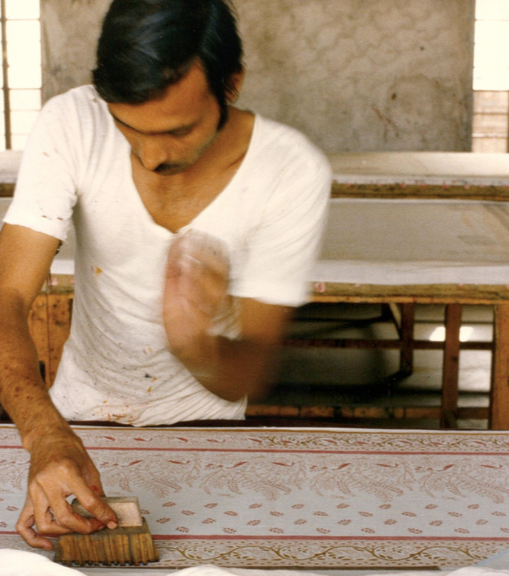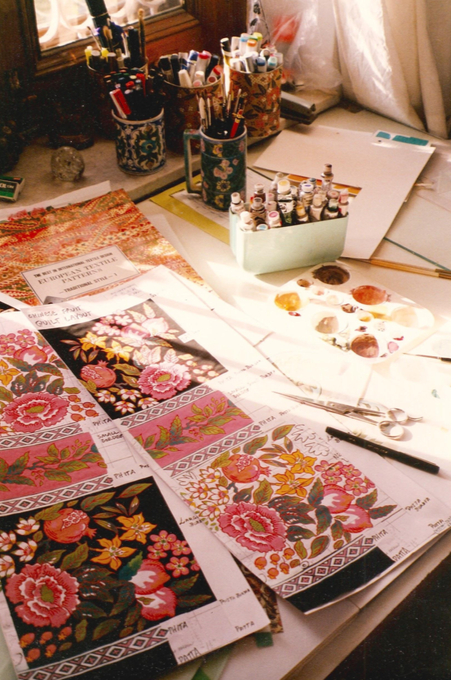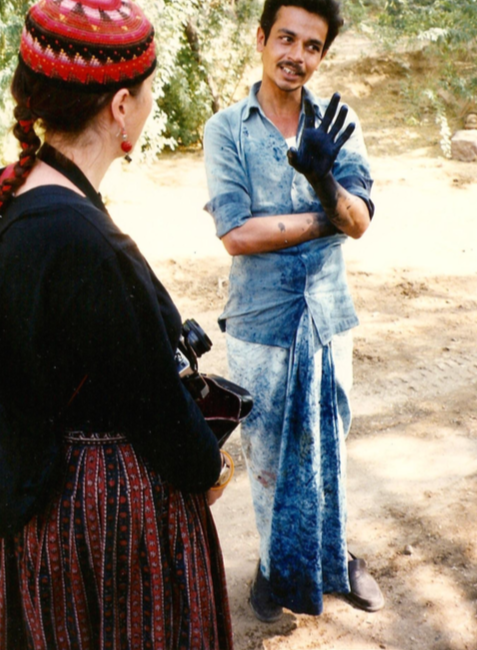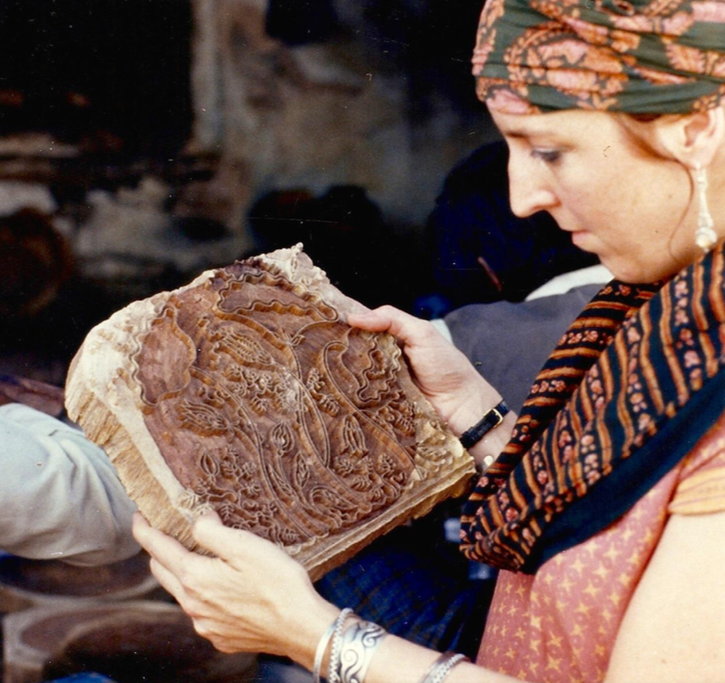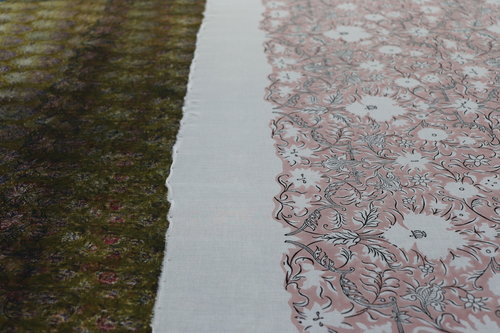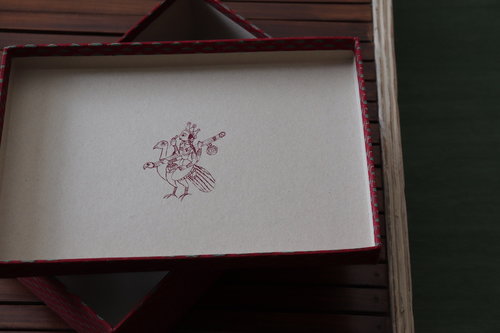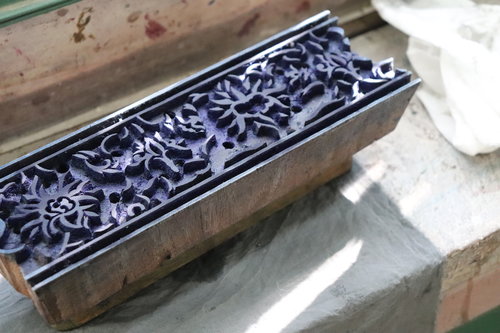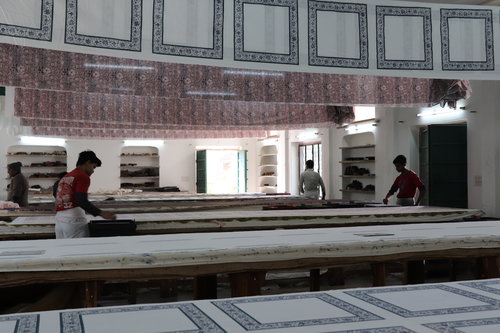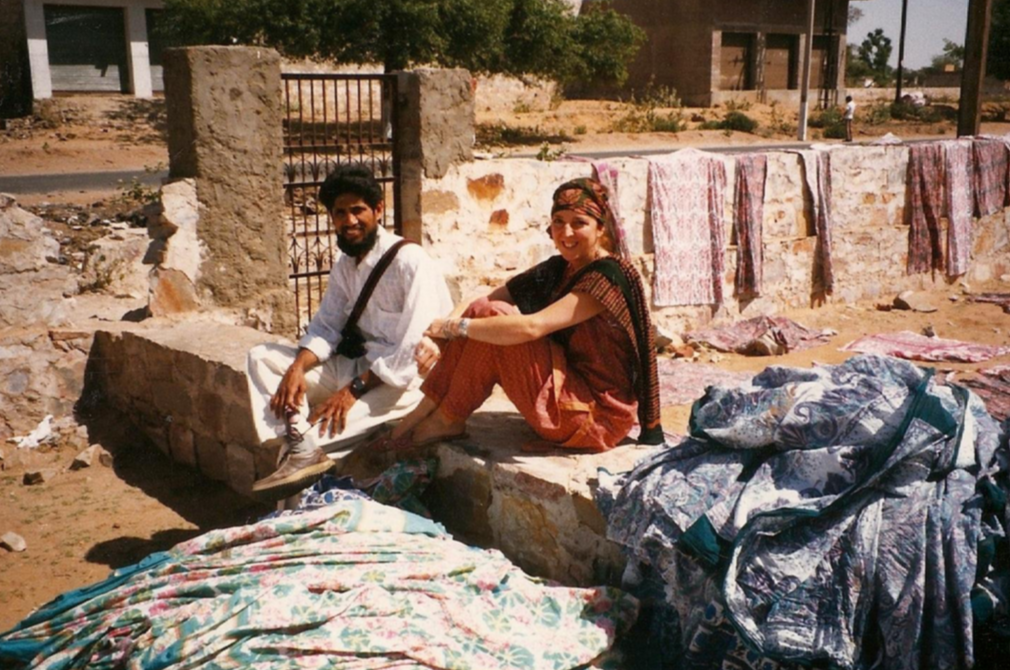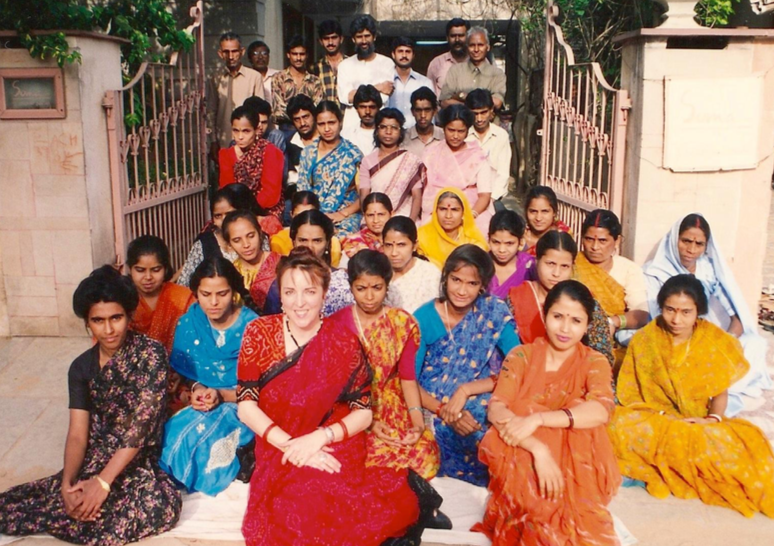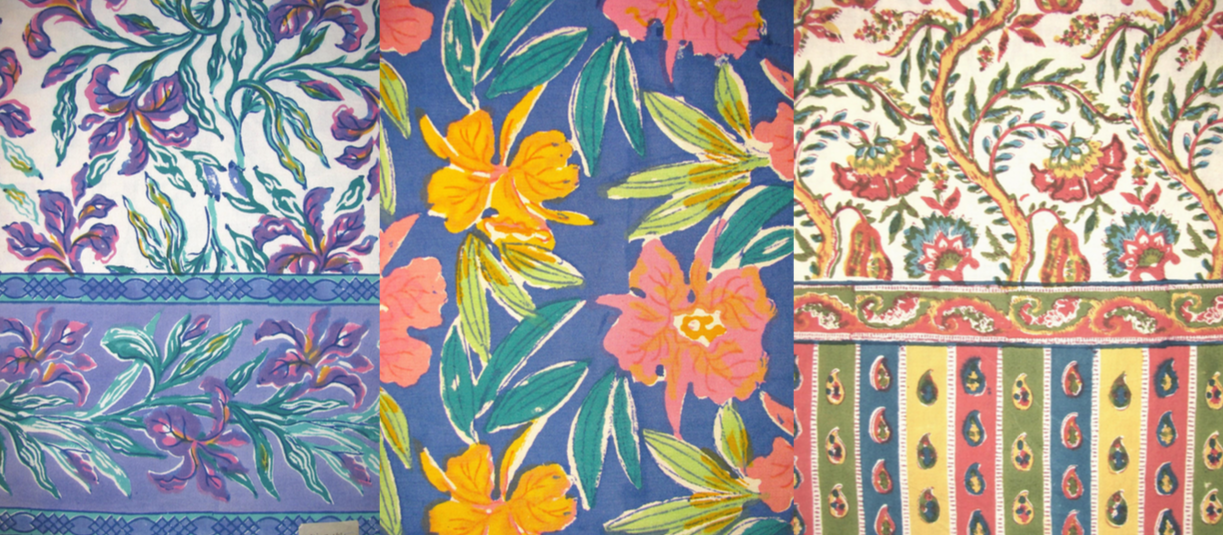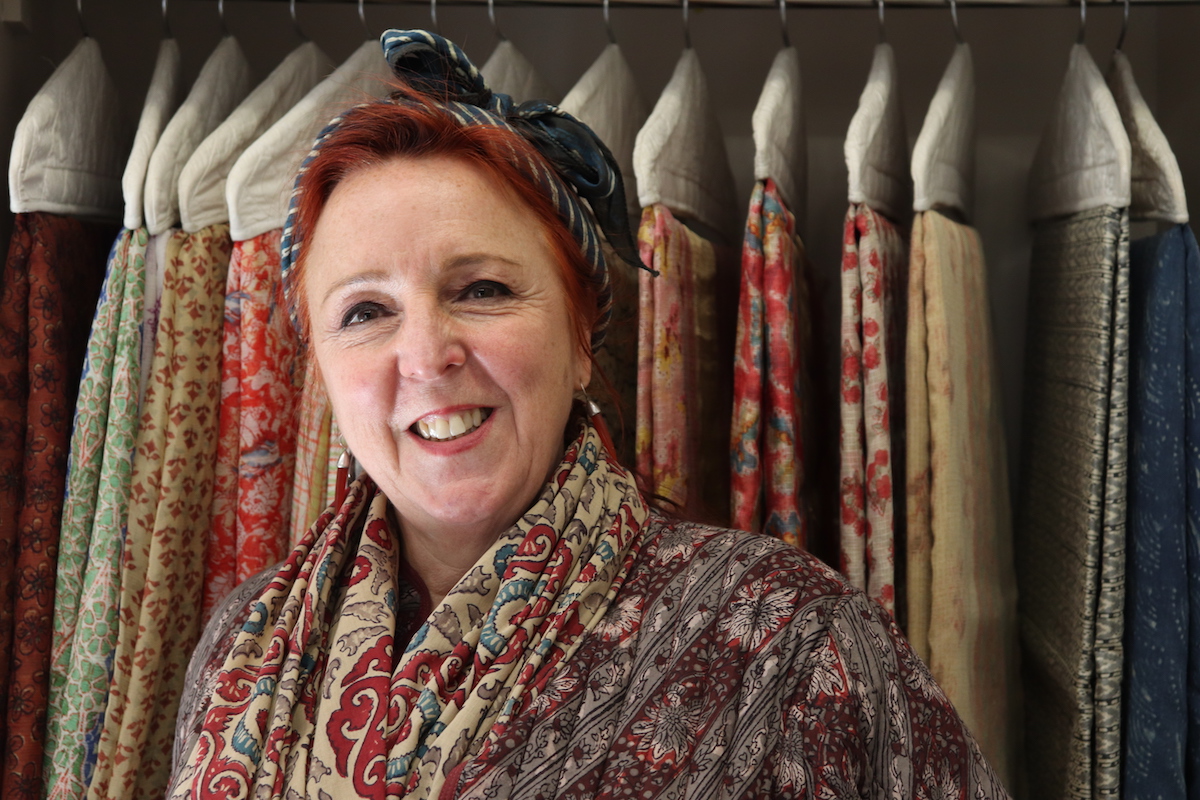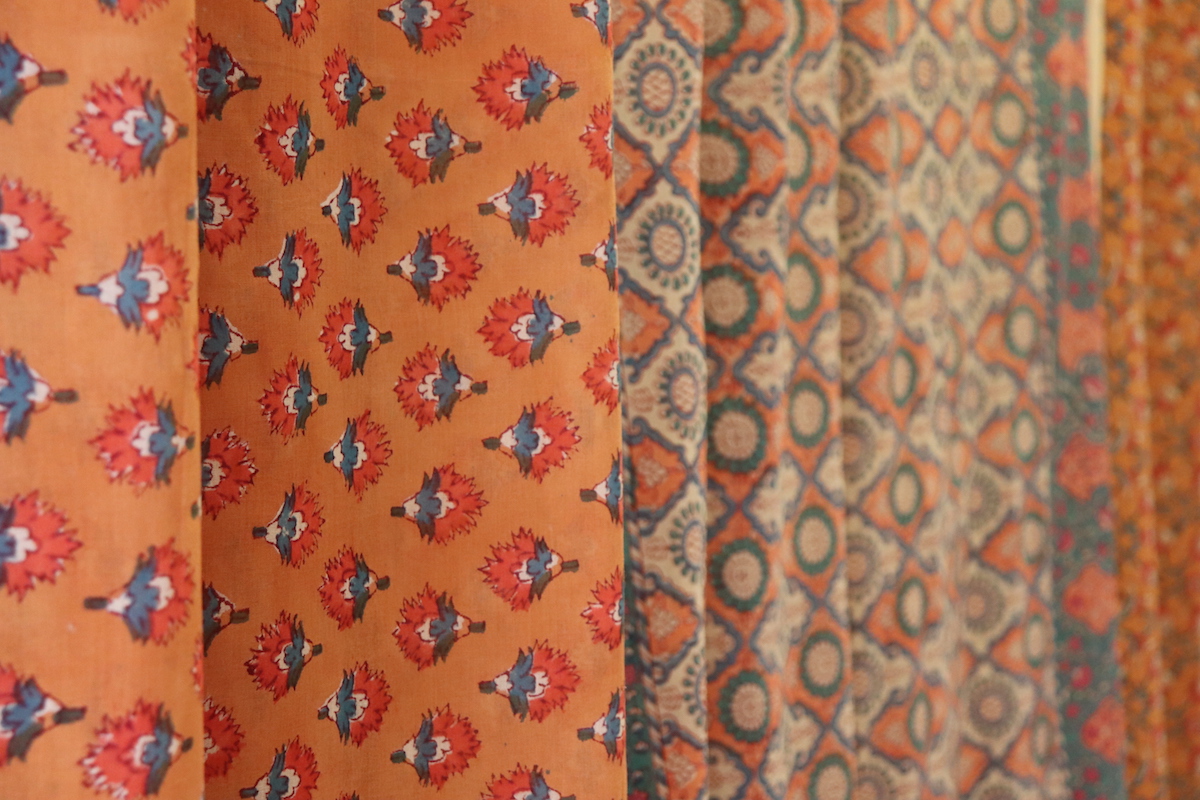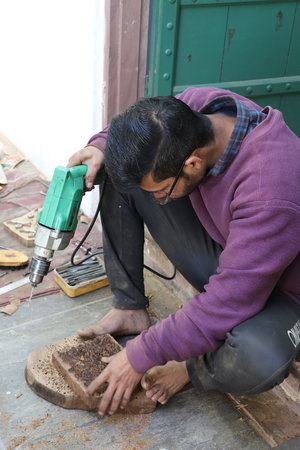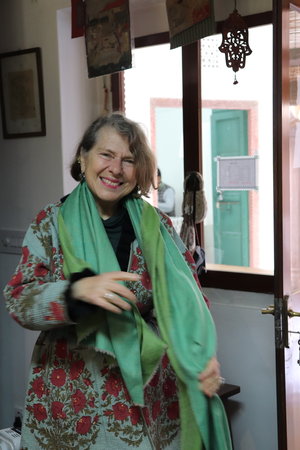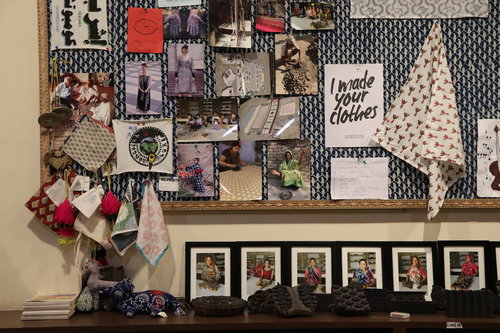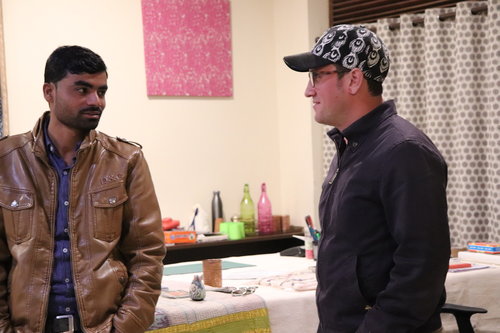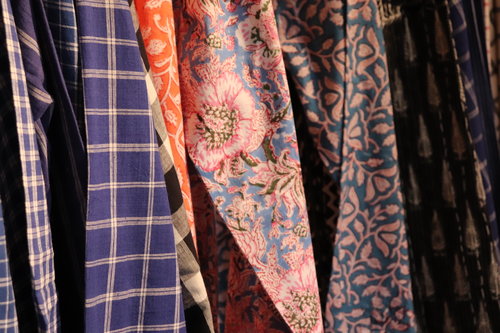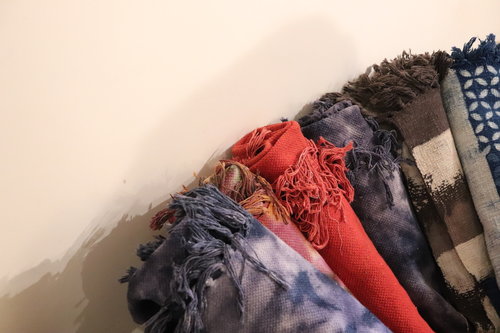Block Printing and its various interpretations
The traditional process of block printing on textiles by hand has been practised in Rajasthan for around five centuries now. Folklore says block printing gained popularity from the village of Bagru, where the chhipa community belongs, and was introduced to other parts of Rajasthan such as Jaipur and Sanganer. The art of block printing is an heirloom tradition passed down from generation to generation, although today we have many youngsters from outside the Chhipa community who have adopted the craftsmanship as a source of income. The 80s saw an interesting influx of designers into the craft space of block printing in Rajasthan. We interact with three designers who set foot in India at that time and went on to create their own interventions and sustainable enterprises with the art of block printing.
Andree Pouliot, Co-Founder and Head of Design at Soma Blockprints, made her first trip to India as a production assistant to her mother in the 1970s. She was 21 and tremendously excited. “It was like moving through a dream or an illustration from the Victorian Age”, she recollects. In India, she landed in Delhi and then Jaipur. In those days, the men in Rajasthan wore enormous, colourful turbans and Arabian Nights slippers. The women billowed through the bazaar in hand block printed, flowing skirts and pink and yellow-coloured veils, and were covered in heavy silver ornaments.
With time, as Soma grew and opened stores, more designs were needed. Local print design trainees and foreign interns were therefore hired. It involved teaching the new members the knowledge gathered from field explorations and guiding them in the development of the Soma ‘look’. Soma’s mandate right from the beginning was to focus on quality—best quality, indelible printing inks and to always print on high-quality base fabrics that are custom woven in order to maintain quality. The designs are hand-drawn on paper and transferred accurately to tracing paper—one for every colour separation. The block carvers then transfer the design to wood and create a detailed, multi-block design—one block for each colour. Then they carve out the wood blocks using small chisels and large amounts of skill and patience. A skilled colour master is responsible for mixing up the specific inks for each day’s printing and approving the colour swatches (by eye) before production can begin. The colour master must maintain a cupboard full of recipe books as the inks come in powdered form. The design-room computer helps in making the layouts for each, specific product to be printed, and is invaluable for tracking and archiving the hundreds of prints that are created and produced annually. Technology and computers have certainly helped the design process but at Soma, there is no substitute for the skill of hand drawing unique print designs. Ultimately, the Soma aesthetic is a combination of technology with age-old techniques.
Today, Soma prints over 5000 meters daily. It is also one of a handful of established Jaipur block print companies that creates their own prints with in-house designers. India is progressing, through its pool of talented and sophisticated designers and craft innovators who continue to strive in creating recognition and work opportunities for the craftspeople of the country. A similar initiative was undertaken by Jeremy Fritzhand of Studio Bagru who first came to India in 2009, along with an anthropologist, as part of Union College in New York’s 21-day term abroad. He came face to face with the state of craftspeople in the country whose creations were selling for a lot of money without creating any positive impact on their living conditions.
He wanted to build a network and digital presence for this community to open doors for fair trade. Thus, Studio Bagru was started in 2010 with the help of a grant as a social entrepreneurial venture that would allow more direct commerce for artisans. Bagru started as a Tumbler page and then started to sell on Etsy. Responses began to grow which led to a restructure of their team to meet the demands. Another grant recipient came to help, registered as a private limited company and got an export license. The studio began working with big USA retailers like ABC home, Cisco brothers, and Anthropologie to soon create products that involved better wages and design involvement. They were published in the university magazine, one thing led to another and the team received another grant to take things forward. After a hiatus of three years, in between which Fritzhand pursued MBA and some stints in product development for big retailers, he was back in India in 2015. Davis cutter, now 6th generation grant recipient, scaled the vision of Bagru textiles.
Studio Bagru has gone ahead and expanded their activities at the present, which includes organising design workshops, tours, and design education that help in connecting people to the crafts. They have started to wholesale and sell directly to customers through the studio, and also re-worked their sourcing model. As part of design education, they encourage their partners to know their product and the limitations of techniques. In addition, evolving into contemporary spaces, more experience interacting with international designers has led to improvisation and development of the artisans, who are now more open to experimentation and open their minds. This has led to design awareness.
Today, Studio Bagru stands at the vantage point of playing the role of facilitator and educator to document both design and culture development that is happening now. There is a need for awareness regarding traditional designs and cultural appropriation done by many big brands which need to be responsible. Earlier, even though there was global trade of these products, the artisans were considered more of labourers and less as designers and creators themselves as they did not have any ownership of design. Platforms like Fashion Revolution have mobilised considerable change in outlook in the fashion and design industry, encouraging consumers to think about and reassess their purchasing habits. Artisans are becoming more digital savvy as well and realising its importance. The demand for good quality items instead of a focus on volume has influenced their working habits. The younger generation of printers, both from the Chhipa community and from outside, is more excited as there is greater assurance of employment. Earlier, they were paid Rs7–10 per meter which has increased to Rs100 or more today. The studio continues to focus on playing the role of a business catalyst and encourage entrepreneurial growth so that the artisans can become better business owners by themselves. There is emphasis on fair trade, as mentioned before. All in all, the craft sector is going through interesting and positive changes.
Apart from economic sustainability, the other significant area of focus today is environmental sustainability and that’s often a tricky bit to manoeuvre. Traditional printing, requires a lot more water and hence not possible in villages facing water shortage. In Studio Bagru, artisans use pigment printing for innovation and traditional printing in black and red but in limited capacity. Efforts are taken to save water and dispose waste in an eco-friendly way. Waste products are also upcycled into usable products. A renewable water recycling plant is on its way as well.
Brigitte Singh, pioneer of block printing in her own right, maintains a water recycling unit at their workshop as block printing needs a lot of water. The artisans in her atelier are provided with a clean, well ventilated, and lit environment, she emphasises.
Brigitte Singh’s journey to India and into the world of Indian textiles and block printing is yet another tale of adventure and discovery. She likes to call herself a doer, not a thinker. Brigitte first came to India in 1982 to study miniature painting under a scholarship by the Indian and French government. Coming from a family of women who love their textiles, she was immediately drawn towards them. India is a bottomless treasure of textiles and inspiring as a country to any creative person. She recalls it being a very exciting time.
India is a country of many millions of artisans who are highly skilled, with a large portion of them working in textiles, i.e. spinning, weaving or surface decoration. Many of them come to crafts by tradition combined with the necessity of survival. Brigitte iterates how in Europe, people take up crafts as vocation not necessity whereas in India, we have them in abundance. This was a challenge to her in terms of both cultural change and work ethics. Brigitte, at that time, did not have many keys to understand how people function at the bottom, which made it an exciting journey of learning both language and culture. It was with time that she picked up the design vocabulary. She fell in love with the intricacy of block printing while traveling in Jaipur, Sanganer, and Bagru. She soon learnt about the trade journey between Indian and Europe. The discovery that everything in Europe pretty much came from India was a start to something new—a design and culture process.
Her design journey started with what was available locally—her husband and father-in-law’s collections of paintings and textiles. The structure of the market at that time was such that only cheap products were available as people wanted to pay less. She had to intervene; if you want a quick job then you can’t get a great product. Brigitte found that she had to pay for something that is crafted with time, better colours, better cloth, better designs and better tools. Initially, the printers found it quite amusing that she was willing to pay them more; to make the finest quality meant more money. Even today, she describes how happy it makes her to create beautiful things/things of beauty.
Brigitte maintains that there is no bad art. Art is mastery over technique and skill, and design is using it in a creative vision. “When I was 20 I asked myself whether I am an artist or not. I am grateful to life, that I have found the tools to be good at something and that adds value to my life”, she says.
The variety, the exquisite design quality and the technique of the traditional, hand-crafted fabrics was inspiring to the young designer. And so, very early on in her travels in India, Andree Pouliot became determined to learn about and document as many handmade crafts as possible. Since then, the close study of textiles and craft treasures of India became a touchstone throughout her working career and art practice. She had no choice but to be a passionate champion of the artisans. In her quest of learning about Indian artisanship and handicraft, she collaborated with many contemporary artists and designers at that time who were experimenting and creating wonderful, new handmade articles using traditional craft techniques. It is without doubt that, creatively speaking, India provides her with the liveliest, most stimulating and energetic place to live and work in.
It was in Jaipur that Pouliot came in touch with the tradition of block printing. With considerable engagement with the medium she realised that her drawings could be transformed from paper to wood blocks and then to printed fabrics. This gave her life a sharp turn towards India—and to Jaipur specifically, which has been the hub of the art of hand block printing for over 300 years. It is with this spirit of discovery that Soma Blockprints was born in 1984.
A lot of the work in the early days was pivoted upon experimentation with new techniques which required cajoling the printers to use larger blocks and to layer colours. This was an
out-of-box approach for the traditional block printers. Pouliot was constantly traveling to villages, learning on field, finding out about natural dye practices, and picking up local knowledge such as the fact that the dry climate and desert sun of Rajasthan is essential to achieving good, clear block prints because it speeds the process (the fabrics must be dried between each colour change). She was learning by observing the printers at work day after day; she also designed the first few hundred block prints that were produced for export. In the meantime, she also had to learn Hindi to be able to communicate with the people.
Undoubtedly, the obstacles faced over the years have been many: shoestring budgets, local opposition, riots and curfews, and political unrest that cut off supply chains and caused some of our home-based artisans to lose their homes. And, like all businesses, Andree and her partner faced their share of unhelpful bank managers, unscrupulous suppliers, staff and transport shortages: the works. Things are visibly much more stable now in Jaipur than they were in the 80s but, on the down side, the master hand block printers are aging and their skills are rarely being passed on to the younger generation—although, fortunately, skilled printers continue to migrate to Jaipur from different states in India. The challenges continue to be present with authentic wood block prints becoming scarce and more expensive today than in the past. Sanganer, the town near Jaipur where hand block printing has been the main industry since the mid-1700s, began to be overburdened once the printing and rag paper industries expanded rapidly in the 1980s. Now the town is beset by significant water shortages and printing waste water disposal problems. Still, printing goes on, much of it by hand and a lot of it by screen process, which is faster and cheaper.
It takes great skill, patience and effort to produce block print. For this reason authentic hand block print tends to be costlier than screen or machine print by the time it reaches the retail market. The master printers and block-carvers are reaching now in their retiring age, and the young printers of today demand and deserve recognition, respect and upgraded pay for their fine craft work. Many Jaipur block print companies are meeting the challenge; the effort continues to support the good health of this unique fine art. For initiators like Andree Pouliot, the support of India’s fine craft artisans is vital for them to survive and thrive. The market decides, by demand and sales, whether the next generation will continue in the family craft footsteps, or not. Cultural exchange is at a very exciting stage today. There is cross pollination of design, materials and techniques which is enriching all global art communities. The Indian design bank has always been enormously rich, with its deep heritage, inter-cultural influences and continuous developments.
The journey since the 80s till today has evolved when it comes to understanding the concept of design itself. There is a tendency to title people who work with design as ‘designers’. Brigitte finds this odd as design, according to her, is about putting things together when you have a thought with a meaning and in context. “You aim at something, a projection or a vision is important as a designer. You have to learn to watch and observe and give it back with an interpretation”, she opines.
She also observes that the quality of design has not improved with time, mainly because people are not responding to their surroundings. It is important to bring out a little bit of yourself in the work. One may work with ancient designs but the task of the contemporary designer is to reinterpret them with techniques. “Even today I like my old designs the most, and they are being made since 35 years and they are classics”.
For Brigitte, dealing with people continues to be a challenge. She hardly bothered about copyright which led people in trade can be dishonest with her work. What saved her, according to her, was that she was ‘small, involved in every step, and looked into the details. She has also been her own master, throughout, open to all forms of art and to everything that the eyes can soak in. The fact that she runs a small corporation and boutique business (printing only 30 meters a day) made her like the chef in a kitchen, doing her own thing with no rules to follow and guided solely by instinct.
The culture of consumerism today is such that everything is for sale, including travel and experiences, which has also enabled the merge of design, culture, travel and experience. The consumption of such offerings, of course, is partaken by the ‘Upper Class’. Brigitte is not bothered by such an outlook or approach. “I don’t mind it as it does take the craft forward”.
As for the craft practice, she takes it one day at a time There is a certain nonchalance, a certain dreaminess in the way in which she approaches her work today. A sense of assurance that comes only with time, and age. “I have come to an age where I want more space for my garden, my family and my brushes”, she says.
https://www.brigittesingh.com/
https://www.studiobagru.com/
https://www.somashop.com/

